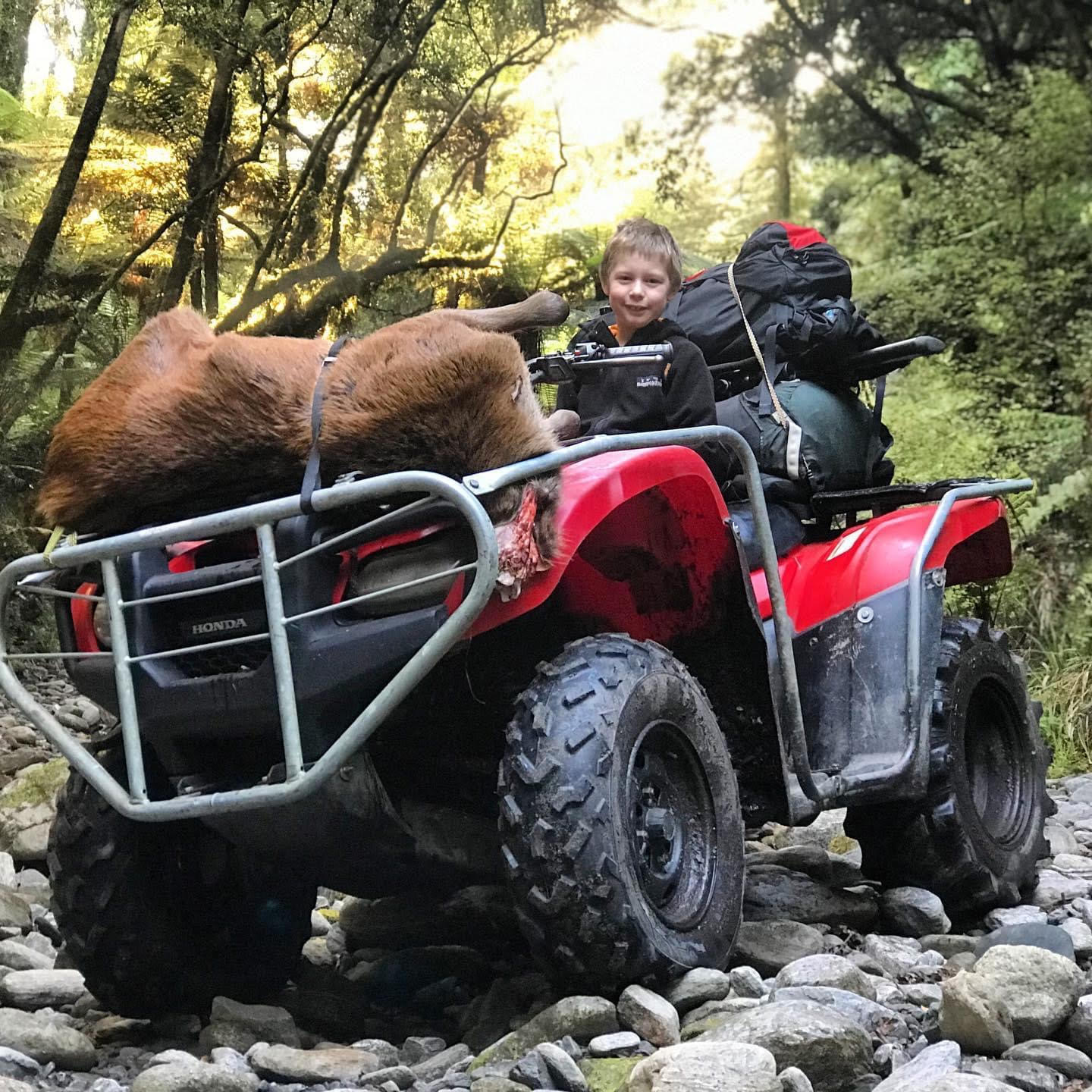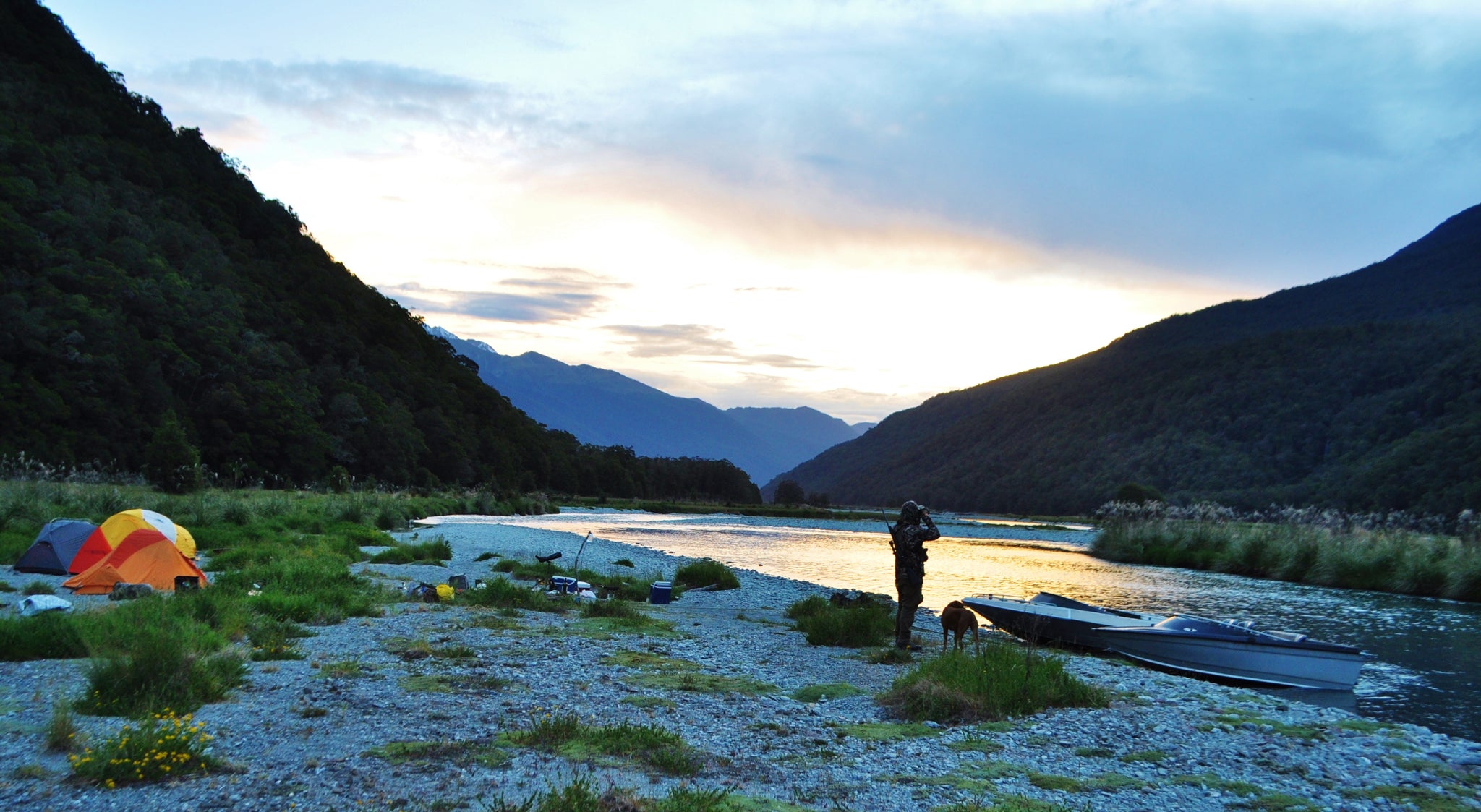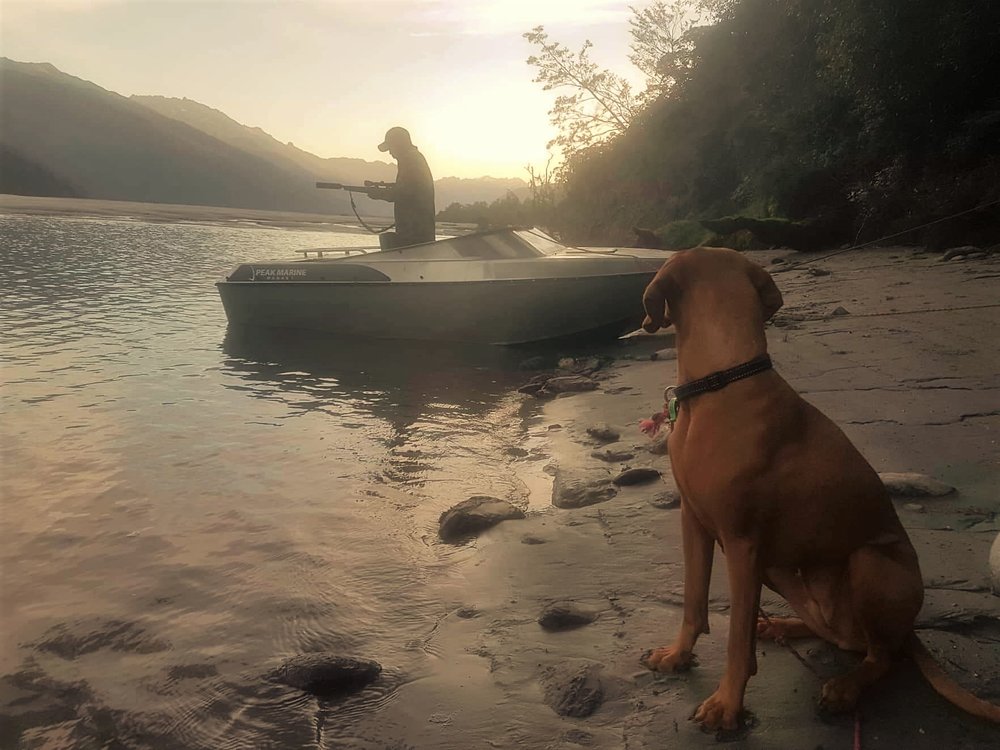When the stag antlers have dropped, and the tahr capes bleaching in the sun, the focus often shifts to re-stocking the freezer in preparation for those long summer evening BBQ’s – part of our DNA makeup here in New Zealand
Spring has many positives, with the days getting longer and pleasant temperatures. It’s the ideal time to fill the freezer and easy enough to keep that meat in good condition before it’s frozen.
It’s also an ideal time to take the kids out on an adventure and show them where their food comes from, also there’s enough daylight left after work hours to get away for an evening hunt, or to tackle a walk in on Friday evening and set yourself up for a weekend in the mountains.

Harrison Black keeping the family freezer full
As the spring growth comes away on the river flats, it’s likely that’s where the deer will be. The flats are easy hunting from a terrain perspective, and being focussed around the first and last half an hour of light is not too disruptive to your sleep patterns. Again, perfect to taking those young folk for a short but authentic adventure.
It’s also a great time from a meat quality perspective, with hinds and yearlings offering easy targets and absolutely prime venison. This is also the time of year when we as recreational hunters are most effective at doing what we need to, which is to help control numbers. The best way to do this is to target hinds and yearling females.

Mark Hansen helping keep the deer number in check
Often those silly spikers wandering around also offer an easy target, and they do eat well. But the best way we can look after our favourite spot is to actually leave these spikers to mature. If we take out those hinds and yearling females we are creating more feed for that silly spiker to get a good start in life and eventually become that trophy stag you might want to chase in the roar.
It’s worth keeping in mind that hinds will start to drop their calves from late November to mid December, so after that time, you have to be really mindful that there maybe a fawn lying in the grass nearby. Personally, once the hinds have dropped I target only the yearlings, which makes the pack outs a bunch easier also. But up to that point I have no problem in taking a hind that is still in calf, as really that’s just doing a better job of keeping the numbers in check.

River flats loaded with prime feed, image @ Ross Nimmo
With fawns on the ground those yearlings then represent an easy target, as more often than not, they have been kicked off mum and are rather blasé in their approach to personal safety, wandering haplessly by themselves or with other castaways.
I like to carry out the full carcass, as it simply hangs better and is easier to keep clean, and you can utilise all those underrated cuts like the shin or shank. Not to mention the front quarters and all the trim that make great sausages and mince. I’ll admit that for years the dogs used to enjoy chewing away on all the shins I’d carted home, but more recently I’ve been refining my slow cooking skills and learnt to add herbs and spices to create a delicious meal. Sorry dogs, but it’s now one of my favourite cuts.
Realistically though, it’s not always possible to pack out an entire animal, especially for those guys who want to hunt further for the experience and isolation, or for those who have matured enough to develop some respect for their knee’s and backs, and would rather still be hunting in their old age. Taking those rear quarters, backstraps and tenderloins and discreetly leaving those shot out shoulders and frame behind can make more sense. Although it’s always a shame to waste any, and I’ll always pack out what I can. Shaun Monk, who by the way has been harder on his running gear than anyone I know, recently pointed out to me that 54% of the total boned out meat comes from the hind quarters, back straps and tenderloins, and these represent all the prime cuts. So wasteful becomes a matter of perspective and what’s realistic in each circumstance, although I’m pretty sure I know what my dogs perspective on this would be.

Back wheels and backstraps
Another good way to do our bit in controlling numbers in those harder to reach places whilst also getting home with a bunch of meat, is to walk in and then fly out. You can enjoy wrecking your legs on the way in and hunting hard whilst you’re there. Within reason, you can stack up a bunch of prime venison, knowing your not going to have to lug it all the way back out again. Throw some game bags in your pack if this is the case, as no pilot wants a bunch of hair and blood that they will have to clean up later.
Spring is still a great time to be in the alpine, although personally I’m pretty mindful of not disturbing those wee pockets of chamois whilst they are dropping kids (usually around mid to late November).
Chamois also don’t need controlling like our deer and tahr, as they are very susceptible to hunting pressure and don’t build up into larger mobs like our other species. And let’s face it, they simply don’t eat anywhere near as well as some of our other species. A young nanny tahr on the other hand provides some seriously tasty protein, although unless I’m somewhere on the coast that still has an obvious density problem, I tend to find myself leaving these guys on the hoof as they’ve been getting more than enough attention from our friendly department.
So get out and enjoys the hills this spring, and try to involve the wife, kids, nieces, nephews, kid from next door or whoever. And be sure to tip over a couple of extra deer to keep everyone’s freezer full.
Originally published in NZ Hunter Magazine - Grab a subscription here





